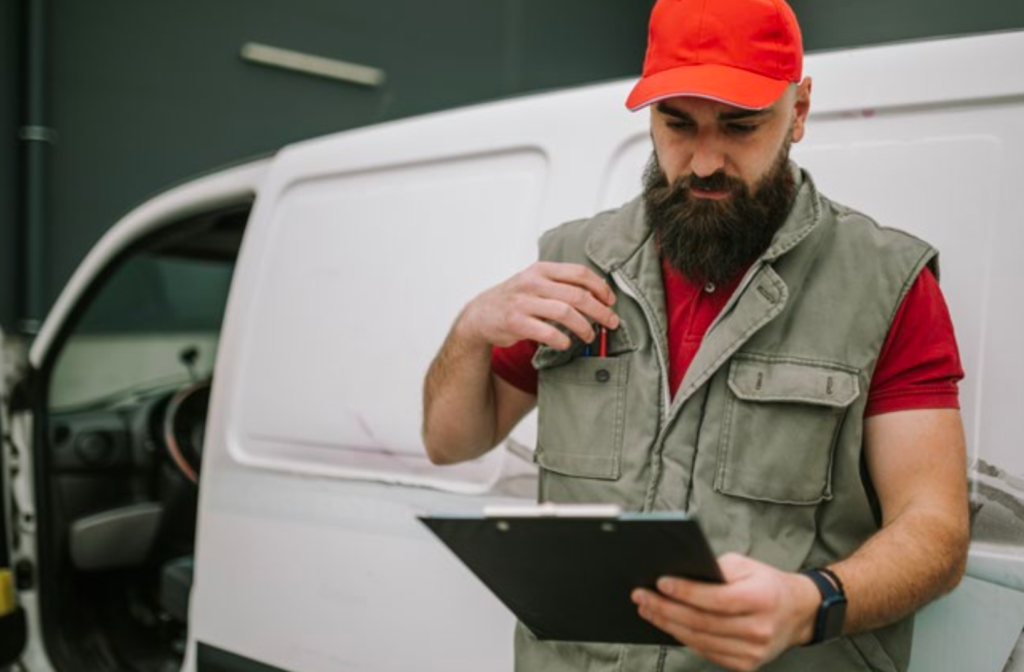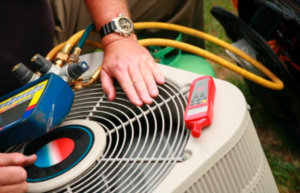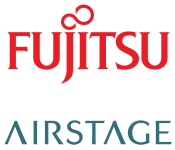
Handling the Refrigerant Transition
August 28, 2024 | By Ian McTeer
Rules you need to know before transporting A2L refrigerant in your service vans.
 Our HVAC/R industry is constantly changing. Remaining well-informed and proactive is crucial for ongoing success. As environmental considerations increasingly shape industry practices, the transition to refrigerants with low global warming potential (GWP) is the order of the day, and the transportation of ‘mildly flammable’ A2L refrigerants in service vehicles will eventually transition from choice to imperative.
Our HVAC/R industry is constantly changing. Remaining well-informed and proactive is crucial for ongoing success. As environmental considerations increasingly shape industry practices, the transition to refrigerants with low global warming potential (GWP) is the order of the day, and the transportation of ‘mildly flammable’ A2L refrigerants in service vehicles will eventually transition from choice to imperative.
This article aims to review the Transportation of Dangerous Goods Regulations (TDGR) as administered by Transport Canada (TC) pertaining to the essential safety protocols meant to protect all users on Canadian roads and highways, with specific attention to where A2Ls fit in. This topic is quite ‘regulatory’ but it’s important to know.
In Canada, to transport dangerous goods, the TDGR requirements have to be met.
Unless exemptions can be used, the product must be classified in accordance with the TDGR (Part 2); a shipping document must adequately describe the dangerous goods (Part 3); the means of containment must bear the appropriate safety marks (Part 4); and the goods must be transported in a prescribed or permitted means of containment (Part 5).
All the activities linked to the transportation of dangerous goods must be done by a knowledgeable person who retains a valid training certificate (Part 6). And any unexpected or uncontrolled release of a dangerous good must be reported (Part 8).
Exemptions have been provided for some cases to provide easement from the regulations. So how will A2Ls be treated by the TDGR?
The following excerpts from the TDGR may require further examination for specific circumstances related to delivery trucks and service vehicles. For further clarification, Transport Canada maintains a nationwide resource of knowledgeable agents who can be reached by phone or by email. Be sure to visit the dangerous goods website for more information: tc.canada.ca

(photo: Andrija Nikolic/Getty Images)
Transporting A2L Cylinders
When any product is packaged in a pressurized container (aerosol cans, cylinders) it then becomes a dangerous good due to the contents being under pressure. TDGR Section 2.13 and 2.14 defines a Class 2 dangerous good, and Class 2 has three divisions:
- Class 2.1 – Flammable gases
- Class 2.2 – Non-flammable gases
- Class 2.3 Toxic gases
Thus, A2L refrigerants are classified in Part 2 as a dangerous good under the TDGR.
The transportation of A2Ls in enclosed vehicles is permitted, however, Transport Canada will only exempt A2Ls from fully regulated transit in cylinders under specific requirements.
There are two exemptions from the requirements surrounding fully regulated loads currently utilized by our industry: 150 kg gross mass exemption and 500 kg gross mass exemption. Even so, both exemptions encompass a bevy of regulations that may require some reexamination of current truck stock practices.
Here comes some details direct from the regulations.
150 kg Gross Mass Exemption 1.15 (1): “Part 3 (Documentation), Part 4 (Dangerous Goods Safety Marks), Part 5 (Means of Containment), Part 6 (Training) and Part 8 (Reporting Requirements) do not apply to the handling, offering for transport or transporting of dangerous goods on a road vehicle.”
So, a service vehicle or delivery truck could carry up to 150 kg of virgin or recovered A2L refrigerants (i.e. R-32 or R454b) without the need for placarding, shipping documents, training, reporting as specified in 1.15(1) under the following conditions:
The cylinder(s) may not have a water capacity greater than 46L. The industry standard 30-lb. cylinder (13.6 kg) is filled to 80% volume and contains approximately 10.88 liters. However, Transport Canada is concerned with the gross mass of the means of containment.
Gross Mass = tare weight + water weight. I used 9.5 kg as the tare weight of a refrigerant cylinder.
Thus, 13.6 kg + 9.5 kg = 23.1 kg total gross mass per cylinder. Thus, it is under the 150 kg gross mass exemption, 150 kg/23.1 kg = 6 cylinders. So, the contractor would be able to carry six Class 2 cylinders in a vehicle.
Not so fast!
According to Transport Canada’s dangerous goods regulations, a cylinder of compressed gas such as oxygen or nitrogen is considered to be a dangerous good; high pressure cylinders must be in accordance with the requirements set out in section 5.10(1) of the TDGR.
This includes cylinders that have been manufactured in accordance with CSA B339. Other flammables in the truck must be accounted for under the 150/500 kg exemption such as propane and acetylene. Take note of the TDGR references to the CSA B340-18 Standard: Selection and Use of Cylinders, Spheres, Tubes, and Other Containers for the Transportation of Dangerous Goods, Class 2.
- CSA B340-18 4.1.3 Fire Extinguishers: “Road vehicles used to transport containers filled with flammable gas shall carry one or more dry chemical fire extinguishers conforming to CAN/ULC-5504 with a combined total effective rating of not less than 10B-C. Each fire extinguisher shall be recharged immediately after each use and shall be inspected and marked annually in accordance with NFPA 10.”
- CSA B340-18 4.1.4 Venting: “Containers in flammable gas service shall be transported in road vehicles only if the cargo space is vented to the outside.”
- CSA B340-18 4.2.3.1: “Containers filled with a refrigerated liquified gas or a liquified flammable gas shall be transported in an upright position unless they are designed for horizontal service.”
- CSA B340-18 4.2.3.2 “During transportation, all containers, boxes, crates, and cradles shall be secured to prevent shifting and overturning. The arrangement of containers during transport and the means and methods of securement shall not cause damage or deformation to the containers, valves, valve protection devices, and other accessories.”
- CSA B340-18 4.3.8: “Pressure relief devices on containers filled with liquified flammable gas shall be in direct contact with the vapour phase only.”
- And, of course, no smoking in the vehicle.
- Cylinders containing more than 46L of an A2L refrigerant (123-lb. “Squat” water capacity 55.8L) are not exempt using the 150/500 kg exemption. Carrying such cylinders in a service truck or delivery vehicle would be treated as a fully regulated load, in other words — Part 3 (Documentation), Part 4 (Dangerous Goods Safety Marks), Part 5 (Means of Containment), Part 6 (Training) and Part 8 (Reporting Requirements) would apply.
Most contractors, already observing the regulations for Class 2.2 refrigerants (non-flammable, non-toxic such as R-22 and R-410A), will have no issues with transporting 13.6 kg Class 2.1 cylinders going forward.
Training and Reporting
In the case of the 500 kg Gross Mass Exemption 1.16 (1): Part 3 (Documentation), Part 4 (Dangerous Goods Safety Marks) and Part 5 (Means of Containment) do not apply to the handling, offering for transport, or transporting of dangerous goods on a road vehicle.
A service vehicle or delivery truck could carry up to 500 kg of virgin or recovered A2L refrigerants, similar to the 150 kg exemption, however, Part 6 (Training) and Part 8 (Reporting Requirements) will apply under the 500 kg exemption.
Training: 6.1:
(1) A person who handles, offers for transport, or transports dangerous goods must:
be adequately trained and hold a training certificate in accordance with this Part; or
perform those activities in the presence and under the direct supervision of a person who is adequately trained and who holds a training certificate in accordance with this Part.
(2) An employer must not direct or allow an employee to handle, offer for transport or transport dangerous goods unless the employee:
is adequately trained and holds a training certificate in accordance with this Part; or
performs those activities in the presence and under the direct supervision of a person who is adequately trained and who holds a training certificate in accordance with this Part.
(See Section 6.3 (1 – 4) pertaining to certification documentation for corporate or self-employed individuals, and here’s a link for more information about training: tc.canada.ca/en/dangerous-goods/tdg-bulletin-tdg-training)
Reporting Requirements: 8.1
This Part applies in respect of:
- the release or anticipated release of dangerous goods that are being offered for transport, handled, or transported by road vehicle…
- the loss or theft of dangerous goods; and
- unlawful interference with dangerous goods.
- Any of the above must be reported to local authorities and to Transport Canada.
The 500 kg gross mass exemption includes the prohibition of cylinders containing more than 46L of 2.1 flammable liquified gas.
New Requirement, TDGR Part 17
There is a new requirement in the TDGR, and companies or individuals that meet the requirements to register will need to do so by October 23, 2024.
In many situations, those wanting to use the 500-kg gross mass exemption will have to register with TC’s Client Identification Database.
Registration will be done online, and users will find a questionnaire that will help in determining whether you or your company needs to register or not: Transport Canada’s Client Indentification Database
Fully Regulated Loads
Transporting even one squat (55.8L) A2L cylinder in a service or delivery vehicle in a mixed load with 13.6 kg cylinders is possible provided the load is fully regulated. Thus, the following are excerpts from the TDGR describing elements of a fully regulated load:
- A carrier must not take possession of dangerous goods for transport unless the carrier has the shipping document for the dangerous goods. (TDGR Part 3).
- The driver of a road vehicle transporting dangerous goods must ensure that a copy of the shipping document is kept in a pocket mounted on the driver’s door or within the driver’s reach, or on the driver’s seat, or in a location that is clearly visible to anyone entering through the driver’s door. (TDGR Part 3).
- Dangerous good safety marks (placarding): A person must not offer for transport, transport, or import a means of containment that contains dangerous goods unless each dangerous goods safety mark required is displayed on it in accordance with this Part (TDGR Part 4).
- Means of containment: A person must not offer for transport, handle or transport dangerous goods included in Class 2, Gases, in a means of containment unless the means of containment is manufactured, selected, and used in accordance with CSA B340-18 for road vehicles carrying cylinders. (TDGR Part 5).
- The carrier or driver must be trained to properly handle dangerous goods and driver must carry a valid training certificate as discussed above (TDGR Part 6).
- Reporting Requirements are meant for any release of a dangerous good, the loss or theft of a dangerous good or unlawful interference with a dangerous good must be reported to local authorities as soon as possible and to Transport Canada (TDGR Part 8).
- All TDGR as described above apply to regulated waste such as recovered contaminated A2L refrigerants being transported to a licensed facility.

New refrigerants will require new training, both on the tools and in the vans. (photo: JaniceRichard/Getty Images)
Documentation, or a vehicle placard, showing an unlisted UN shipping code is a violation of the TDGR and may lead to penalties. For example, the code for R-32 is UN3252. R454b is listed as UN3161 N.O.S., (not otherwise specified).
This means the substance is a mixture having a variety of hazardous ingredients, thus R-454b is a zeotropic blend of R-32 and R-1234yf.
N.O.S. means that R454b is a hazardous good that does not have a more specific applicable name in the UN database.
Transport Canada or provincial transportation authorities, such as the Ministry of Transportation of Ontario (MTO), are jointly responsible for enforcing safety regulations. When inspecting a service vehicle carrying flammable gases (like refrigerant, propane, or acetylene) authorities will be checking for compliance with the Canada Motor Vehicle Safety Standards and the Transportation of Dangerous Goods Regulations (TDGR).
Vehicles must be roadworthy, properly insured, and cannot be overweight. A vehicle with a seemingly well configured load could still be overweight.
The gross mass of all the pressurized cylinders on board cannot exceed 150 kg, otherwise the 500 kg exemption might apply, and in that case TDGR Part 6 (Training) and TDGR Part 8 (Reporting) requirements apply to the load.
As noted previously, 500 kg gross mass users need to register with Transport Canada’s Client Information Database (CID). And the entire vehicle load cannot exceed its gross vehicle weight rating (GVWR).
I looked at the specs for a Mercedes 2500 Sprinter Cargo Van (base model, 4-cylinder diesel, RWD), it’s GVWR is 4105 kg. This is the maximum permissible weight said van can handle without a trailer. It includes its curb weight and its payload. When towing a trailer, the gross combination weight rating (GCWR), which is the sum of GVWR value and the weight of any attached trailer and the cargo in the trailer for this vehicle, is 6,318 kg.
HVAC truck loads can be heavy as well as potentially dangerous. With A2Ls on the horizon, now is a good time to reexamine your vehicles for safety and compliance with the TDGR. <>
 Ian McTeer is a regular contributor to HPAC and an HVAC consultant with over 35 years of experience in the industry. He was most recently a field representative for Trane Canada DSO. McTeer is a refrigeration mechanic and Class 1 Gas technician. He can be reached at imcteer@outlook.com.
Ian McTeer is a regular contributor to HPAC and an HVAC consultant with over 35 years of experience in the industry. He was most recently a field representative for Trane Canada DSO. McTeer is a refrigeration mechanic and Class 1 Gas technician. He can be reached at imcteer@outlook.com.


